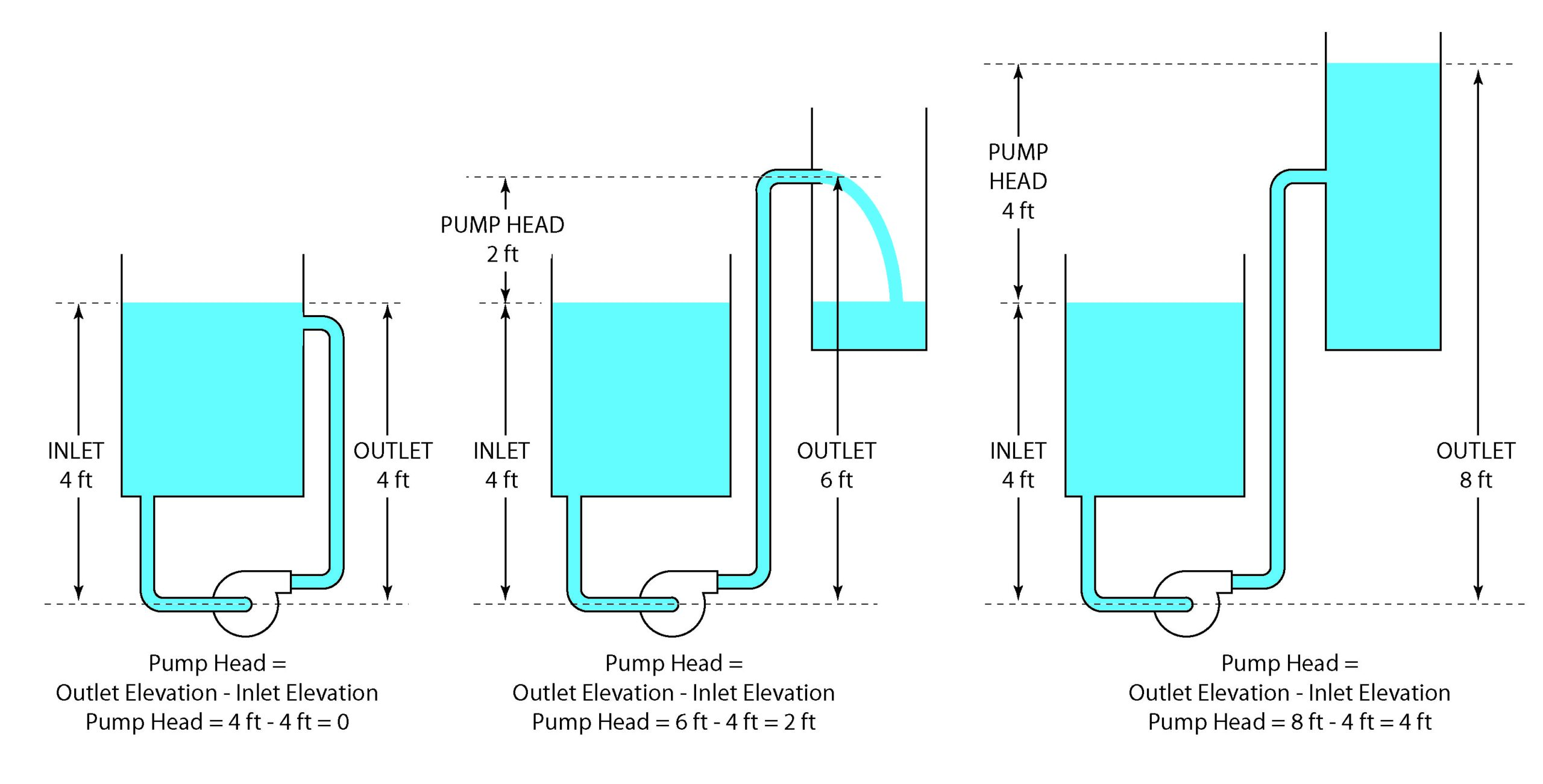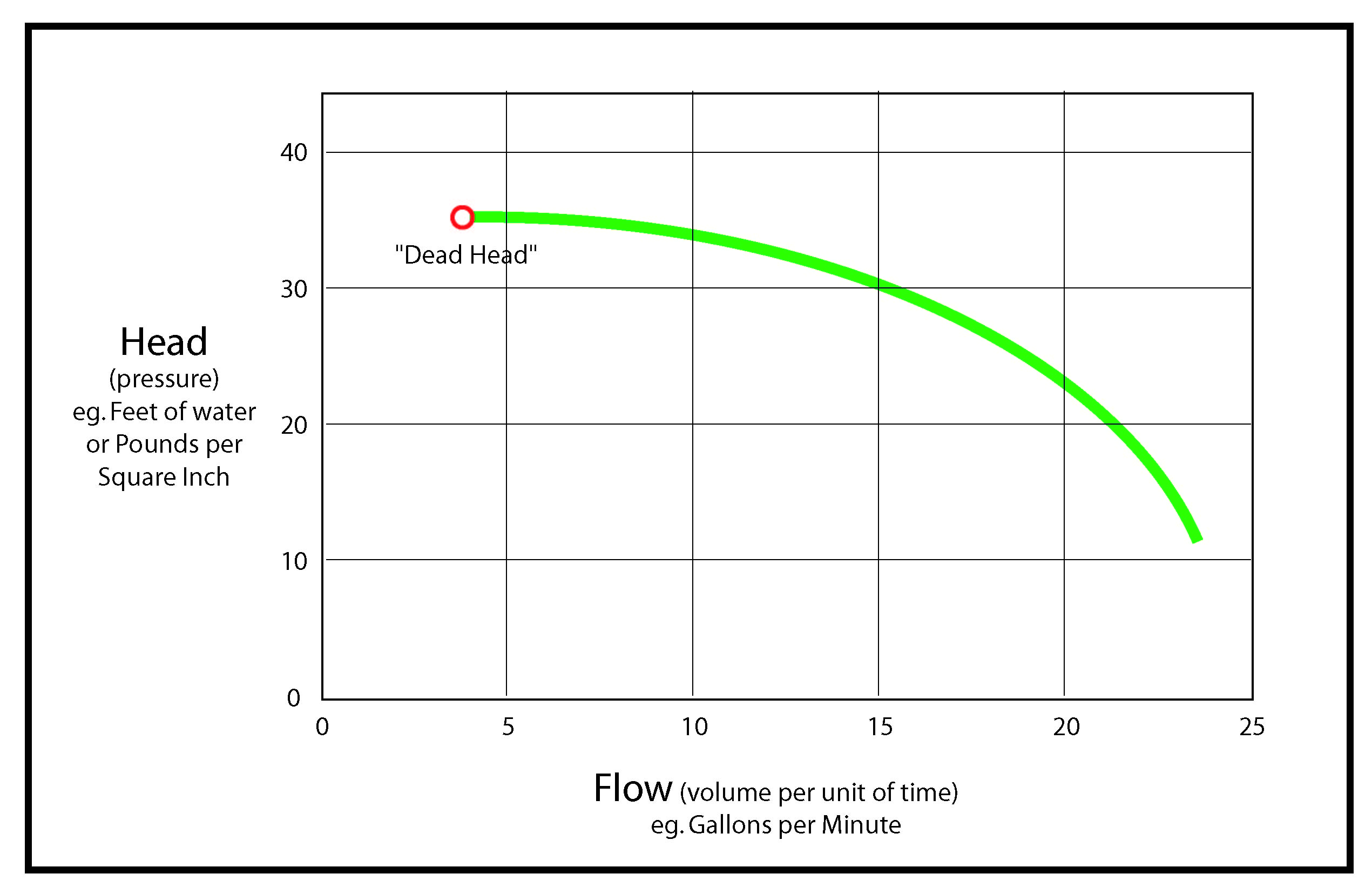A rose is a rose is a rose. But pumps, now that’s a different thing. Pumps, even though they may look physically the same, can vary significantly in their ability to pump liquids under various conditions. In order to know how a pump will perform in a particular application, one must rely on something called a pump curve.
Pump curves, unfortunately, do not have a universal format. Knowing what you are looking at sometimes requires a little bit of interpretation to allow a fair comparison of pumps described in different ways by different manufacturers. Let’s start with the most simple pump curve which is an X-Y graph showing the flow of the pump vs. the head pressure.
It looks simple enough, but what does it really mean?
Head –
The “head” of a pump in the most simple terms is the difference in elevation from the liquid source to the elevation of the delivery point. This is essentially the distance the pump must lift the liquid.

Head (of water) can directly converted to pressure by the formula
Pressure (pounds per square inch) = 0.434 Head (feet) times Specific Gravity
Note – Liquids that weigh more or less than water per unit volume will exert more or less pressure for a given head which requires a correction based on the specific gravity of the liquid. Fortunately, the specific gavity of water is 1 so no correction is required in the above formula.
In fact, however, the pump must usually do more than just raise the liquid. Pipe friction, pressure drop across filters and valves, nozzle orifices and anything else that resists the flow of liquid must be added to the work the pump has to do and must be included in the pump head. In some cases the speed of flow may significantly change the resistance to flow and must be figured in. It gets complicated!

Agitation and Ultrasonics Combined For Highly Effective Cleaning
Going back to the pump curve, notice that one axis is feet of head (or psi) and the other is flow rate given in units of volume per length of time (usually gallons per minute but other units of measure may apply). What this says, simply, is that the more pressure the pump has to pump against, the smaller the volume of liquid it will pump. In our example pump curve, this pump will provide a flow of about 5 gallons per minute when working against a 35 foot head. If the head is 20 feet, the flow will be reduced to about 22 gallons per minute.
Notice that the curve ends on the left before it reaches the zero flow point. This indicates that this pump should not be used at a flow rate of less than about 4 gallons per minute. Although this may be for various reasons, it is usually due to the fact that a flow rate of less than 4 gallons per minute will not provide sufficient cooling for the pump seal. The far left end of the curve also is what is known as the “dead head” value for the pump. If the pump is pumping into a sealed outlet (dead head) the maximum pressure it can create is at this point. In our example, this is about 35 pounds per square inch.
We have scratched the surface of pump performance curves in this blog. Upcoming blogs will discuss other aspects of the pump curve along with examples of how to calculate the real head a pump is working against which is often more than the difference of height between the intake to the delivery point as suggested above.
– FJF –


 Water – De-ionized – Hints
Water – De-ionized – Hints  A Fond Farewell to John Fuchs
A Fond Farewell to John Fuchs  Millipore Testing – Evaluation by Particle Counting
Millipore Testing – Evaluation by Particle Counting  Tape Test for Cleaning Revisited
Tape Test for Cleaning Revisited